Related Research Articles

The Royal Irish Academy, based in Dublin, is an academic body that promotes study in the sciences, humanities and social sciences. It is Ireland's premier learned society and one of its leading cultural institutions. The Academy was established in 1785 and granted a royal charter in 1786. As of 2019, the RIA has around 600 members, regular members being Irish residents elected in recognition of their academic achievements, and Honorary Members similarly qualified but based abroad; a small number of members are elected in recognition of non-academic contributions to society.
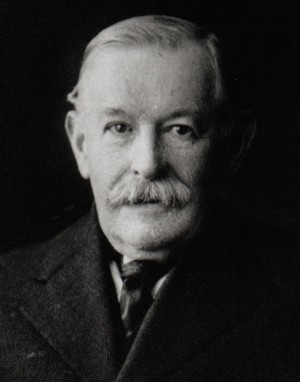
Robert Alexander Stewart Macalister was an Irish archaeologist.
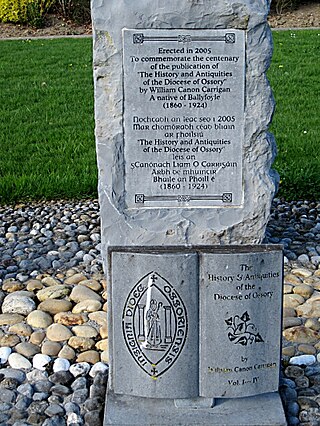
William Carrigan was an Irish Roman Catholic priest and historian, who was appointed canon of the Diocese of Ossory.
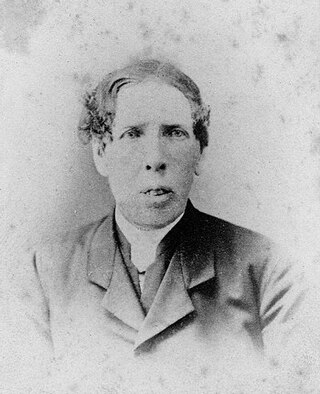
James Graves was an Irish clergyman, antiquary and archaeologist of the Victorian era.
Flagmount is a combination of two townlands located within the barony of Gowran and on the R712 National primary road, in County Kilkenny, Ireland. It is located in Gowran civil parish.
Francis Xavier Martin, OSA was an Irish cleric, historian and activist.

The Cambrian Archaeological Association was founded in 1846 to examine, preserve and illustrate the ancient monuments and remains of the history, language, manners, customs, arts and industries of Wales and the Welsh Marches and to educate the public in such matters. The association's activities include sponsoring lectures, field visits, and study tours; as well as publishing its journal, Archaeologia Cambrensis, and monographs. It also provides grants to support research and publications.

Carrigogunnell Castle is a medieval Irish fortification near the village of Clarina, on the banks of the River Shannon in County Limerick.
Gearóid Mac Eoin was an Irish academic whose studies focused especially on aspects of Irish language, literature and history.
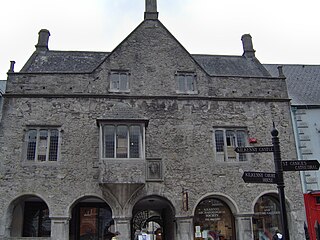
The Kilkenny Archaeological Society is an archaeological society in County Kilkenny, Ireland.
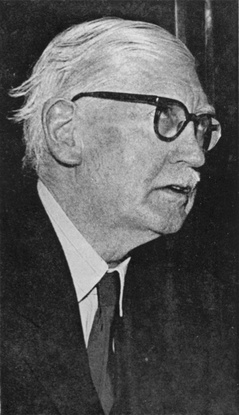
Liam Price was a County Wicklow judge, historian and former president of the Royal Society of Antiquaries of Ireland (RSAI) who published work on historical topography and the history of placenames, especially for the county of Wicklow, where he was a district justice. His work on these areas has been published in journals and books and his contribution, totalling about 40 papers, was acknowledged in a special issue of the Journal of the Royal Society of Antiquaries of Ireland in 1965, shortly before his death in 1967.

Margaret Phelan was President of the Kilkenny Archaeological Society, given freedom of the city of Kilkenny and ensured the restoration of Rothe House in Kilkenny. She was also the first Ladies president of the Kilkenny Golf Club.
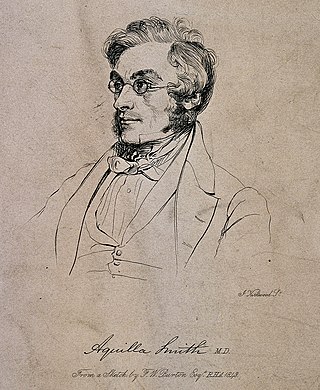
Aquilla Smith was a highly regarded medical doctor, numismatist and archaeologist. He represented the Irish College of Physicians on the General Medical Council for almost forty years, and was an authority on Irish numismatics.
John Windele was an Irish antiquarian, particularly interested in early Irish literature and Ogham inscriptions.

George Dames Burtchaell, KC, MA, LLB, MRIA, JP was an Irish genealogist.
John George Augustus Prim (1821–1875) was an Irish journalist, newspaper editor, antiquary and archaeologist of the Victorian era.

Helen M. Roe , was an Irish librarian and antiquary, a champion of medieval Irish art and iconography.
John Bradley was a historian and archaeologist at NUI Maynooth. He grew up in Kilkenny and published many papers about his hometown.
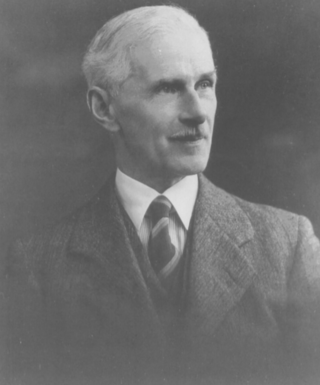
Harold G. Leask was an Irish architectural historian, archaeologist and the first Inspector of National Monuments of the Irish Free State.
Walter G. Strickland was an English art historian, bibliographer, and antiquary. He wrote A dictionary of Irish artists (1913).
References
- ↑ The Journal of the Royal Society of Antiquaries of Ireland. Royal Society of Antiquaries of Ireland. 1981. p. 72.
- ↑ The Proceedings and Papers of the Royal Society of Antiquaries of Ireland. Royal Society of Antiquaries of Ireland. 1892. p. 637.
- ↑ Bannon, Michael J. (1989). Planning: the Irish experience, 1920-1988. Wolfhound Press. p. 87. ISBN 978-0-86327-211-0.
- ↑ "Past Presidents of the RSAI". Royal Society of Antiquaries of Ireland. Retrieved 7 March 2018.
- ↑ "Dictionary of Irish Architects" . Retrieved 31 October 2014.
- ↑ "Professor R.A.S. Macalister (1870-1950) Professor of Celtic Archaeology (1909-1943)". University College Dublin. Retrieved 31 October 2014.
- ↑ "MacNeill, Eoin". Oxford DNB. Retrieved 31 October 2014.
- ↑ "Some Irish Naturalists". Office of Public Works (Ireland). Retrieved 30 October 2014.
- ↑ "Ms. Helen Roe". Ask about Ireland. Retrieved 31 October 2014.
- ↑ "Professor James Francis Michael Lydon: Biography and bibliography" . Retrieved 30 October 2014.
- ↑ "Dr. Rachel Moss, Associate Professor, History of Art". Trinity College Dublin. Retrieved 19 July 2021